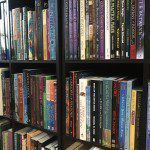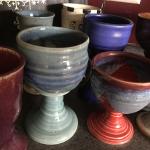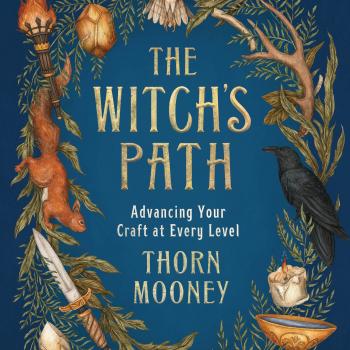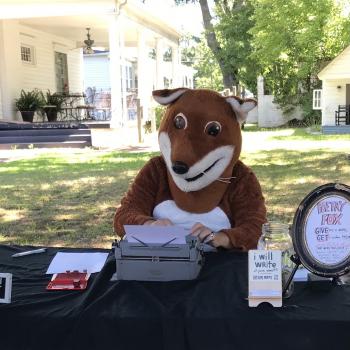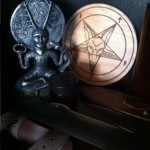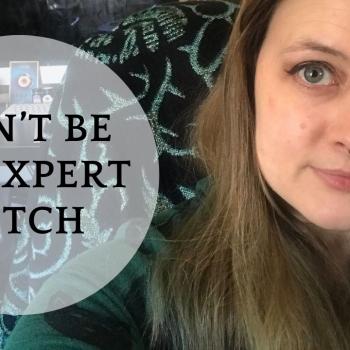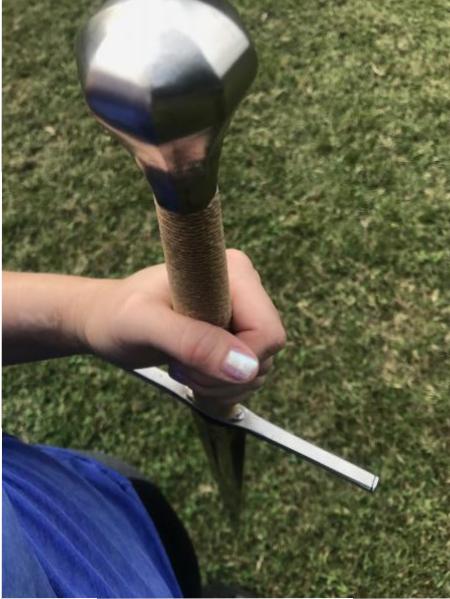 Fundamentally, my practice of Wicca is about connecting with the gods. In my Craft family we talk a lot about our relationships with the divine. We share our struggles making initial contact, deepening that contact to the point where we can not only speak to the gods but also hear their responses. We know ritual has worked when we have felt the presence of the gods. We know what we’re doing is “real” because our gods do hear and respond…at least sometimes. Sometimes things fall flat and there’s silence. We can feel that, too. Sometimes it’s that silence that drives us to leave one coven or tradition for another, to try something from a different tradition, or even to just walk away altogether.
Fundamentally, my practice of Wicca is about connecting with the gods. In my Craft family we talk a lot about our relationships with the divine. We share our struggles making initial contact, deepening that contact to the point where we can not only speak to the gods but also hear their responses. We know ritual has worked when we have felt the presence of the gods. We know what we’re doing is “real” because our gods do hear and respond…at least sometimes. Sometimes things fall flat and there’s silence. We can feel that, too. Sometimes it’s that silence that drives us to leave one coven or tradition for another, to try something from a different tradition, or even to just walk away altogether.
I imagine that many of us have similar concerns. We’re here because we’re searching for something, or maybe because we feel called and are trying to answer that call. We’re trying to touch something, even if we can’t always articulate exactly what that means.
And have you ever been in a circle where you looked around during a still moment in circle and realized that other people were clearly have that connection without you?
When I was in college in Williamsburg, VA, I would drive forty minutes south to Norfolk where there was a Pagan drum circle every Monday night. I didn’t go for the drumming or dancing or even the company. I went because I was looking for the gods—looking for some evidence that there was merit to anything I was reading, anything beyond what I was doing in my own bedroom, struggling afterward to decide if my experiences were real or if it was my responsibility to make them real by believing in them hard enough. And, here, you have to keep in mind my secular upbringing and lack of religious models. I was hearing and feeling something, but could have just as easily blamed those inklings on mental illness, wishful thinking, or a half-dozen other things that would better square with the rest of my life. At this point in my life, it’s not like I could just ask someone I trusted if my experiences were typical.
I’d look around at the faces in the circle at open rituals, eyes closed, hands slightly extended, palms raised, breaths in through the nose and out through the mouth. Sometimes there were tears.
I learned to emulate these gestures, but they felt empty. I kept seeking.
In later years, doing ethnographic work with evangelical Protestants, I would be reminded of those experiences as I watched Christian children turn to their parents—very literally—and mimic the display of worship: arms raised, hands outstretched, parted lips braced for prayers that might still be years away. Piety and the experience of the divine modeled for them in a way that it was never modeled for me. It was an odd kind of envy.
And I envied the people standing in circle week after week in Norfolk. I could move the way they did, and I quickly learned the language of god-experience. I could pass as an insider, but I felt alone in my lack of experience. In my self-absorption, it didn’t occur to me until years later that any of them may also be struggling, going through the motions and praying for the real feel that’s supposed to follow. I had inklings and I felt called. Was that real? And if so, why did so many of those rituals leave me cold, when everyone else seemed to be so deeply moved?
But I’ve learned something important in just the last year, as I’ve revisited these places, struggled with coven leadership (which, it turns out, gets harder as your people advance), and continued beating my depression back in line: in worship, there’s no such thing as an empty going through the motions. The motions are important in and of themselves.
Part of what I needed was time in these spaces, and to relax into the movements that would come to function as triggers. The fact that an evangelical child learns about the physicality of worship by watching his parents doesn’t mean that the gestures are empty, mechanical, or inauthentic. Sometimes I think it’s like how neural pathways are created in the brain, or like how practicing scales for hours creates the space for improvisation in jazz. Get the basics out of the way—build up that muscle memory—and create the space for the real magic to happen. You stop thinking about your body and the bodies of others, and you just feel for the gods. Worship isn’t fundamentally about my feelings, or whether or not I’m even getting something at all out of it each time. That’s part of why what we do is called a practice. By training my body, I get myself out of the way.
Some people seem to make connections more easily than others. Some people have no issue blazing their own way and finding things that work for them all on their own. That wasn’t me. I needed to practice, for years, before finally feeling like what I was doing was for something real. Now, going through the motions is comforting and creates space for what could happen.

